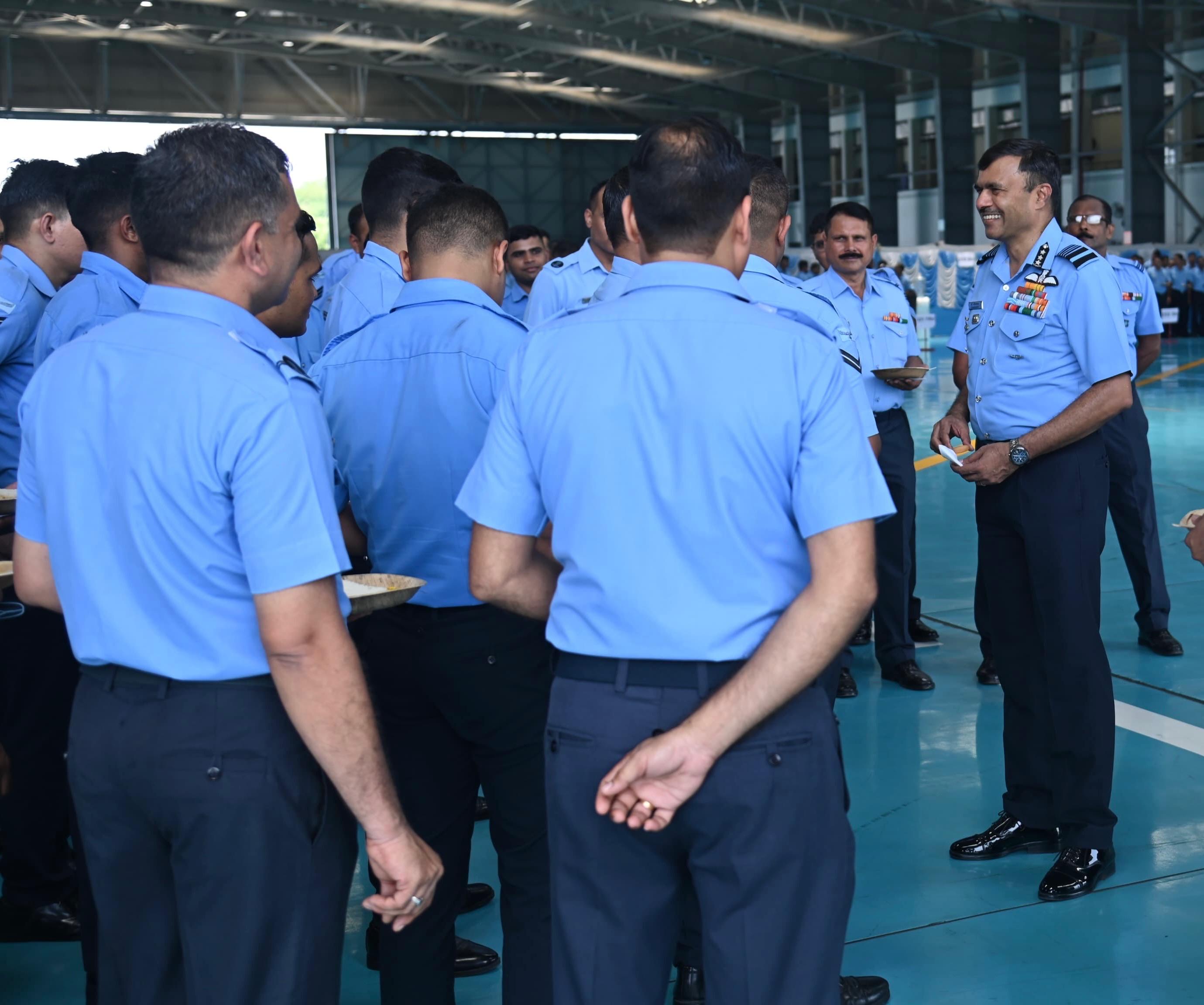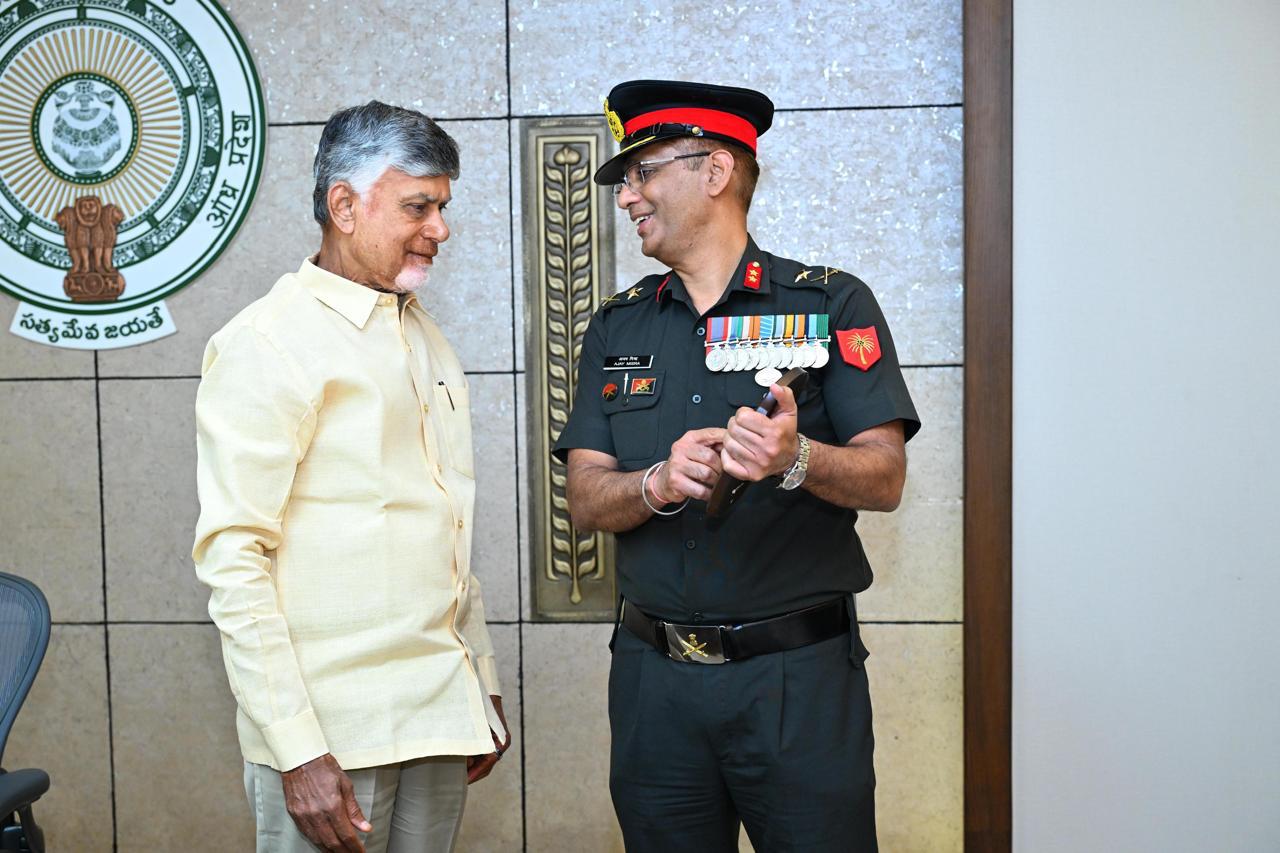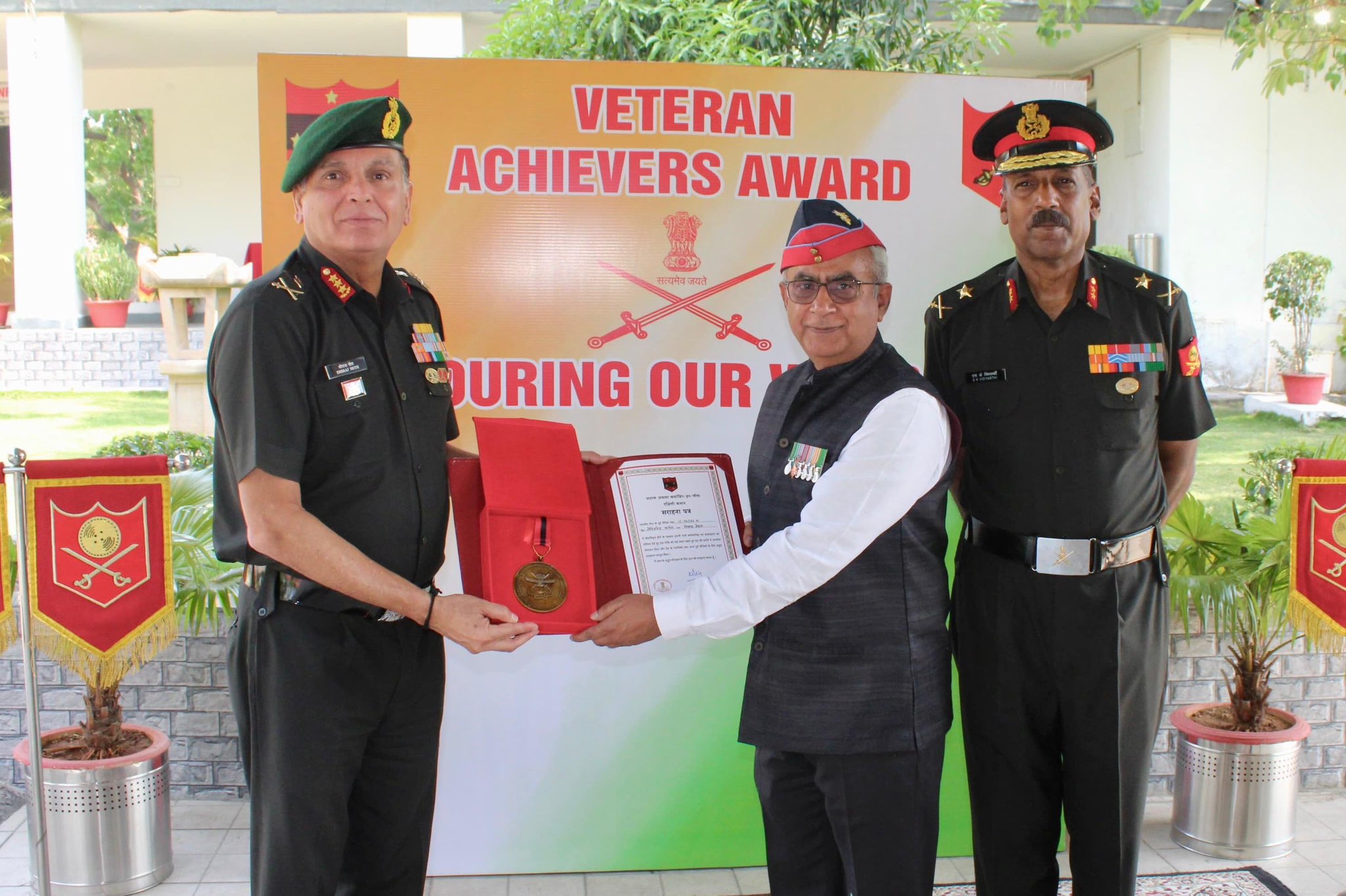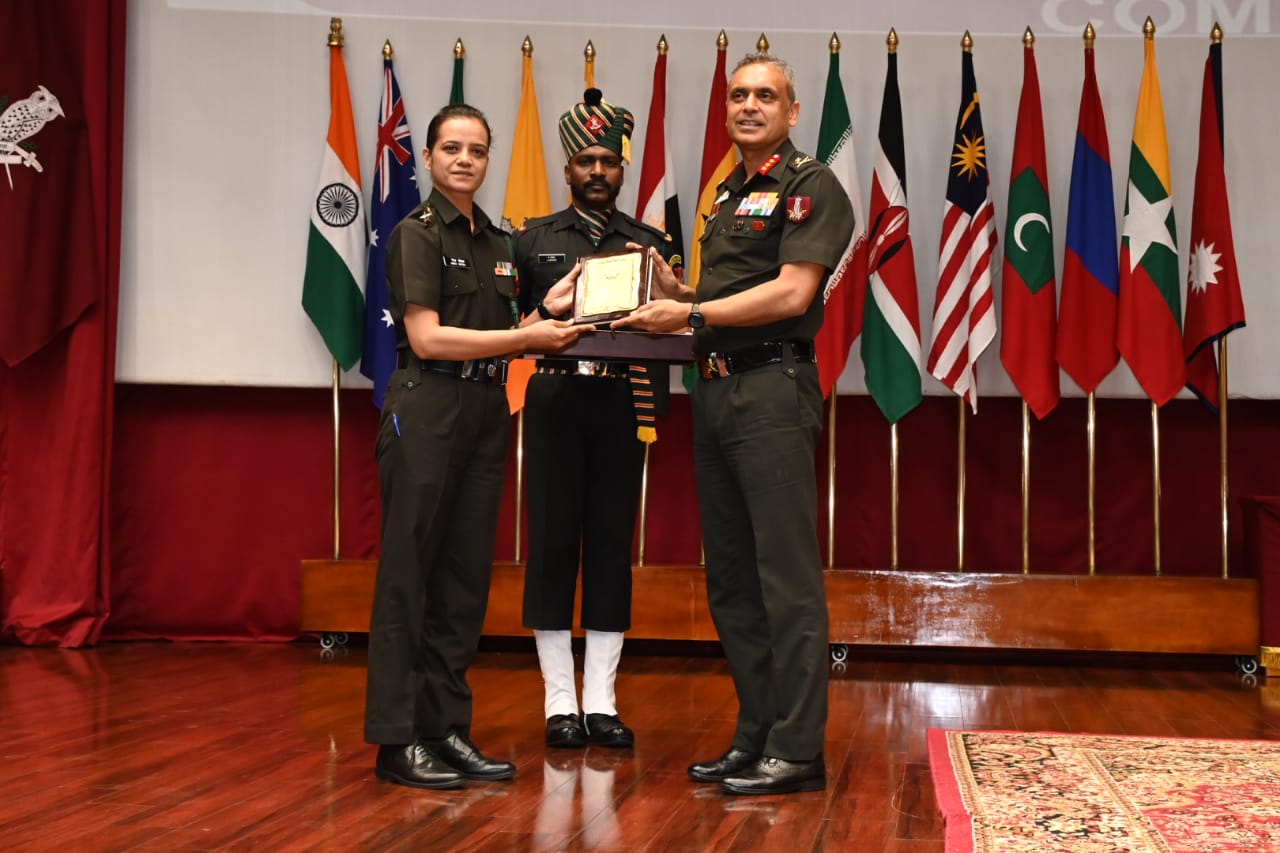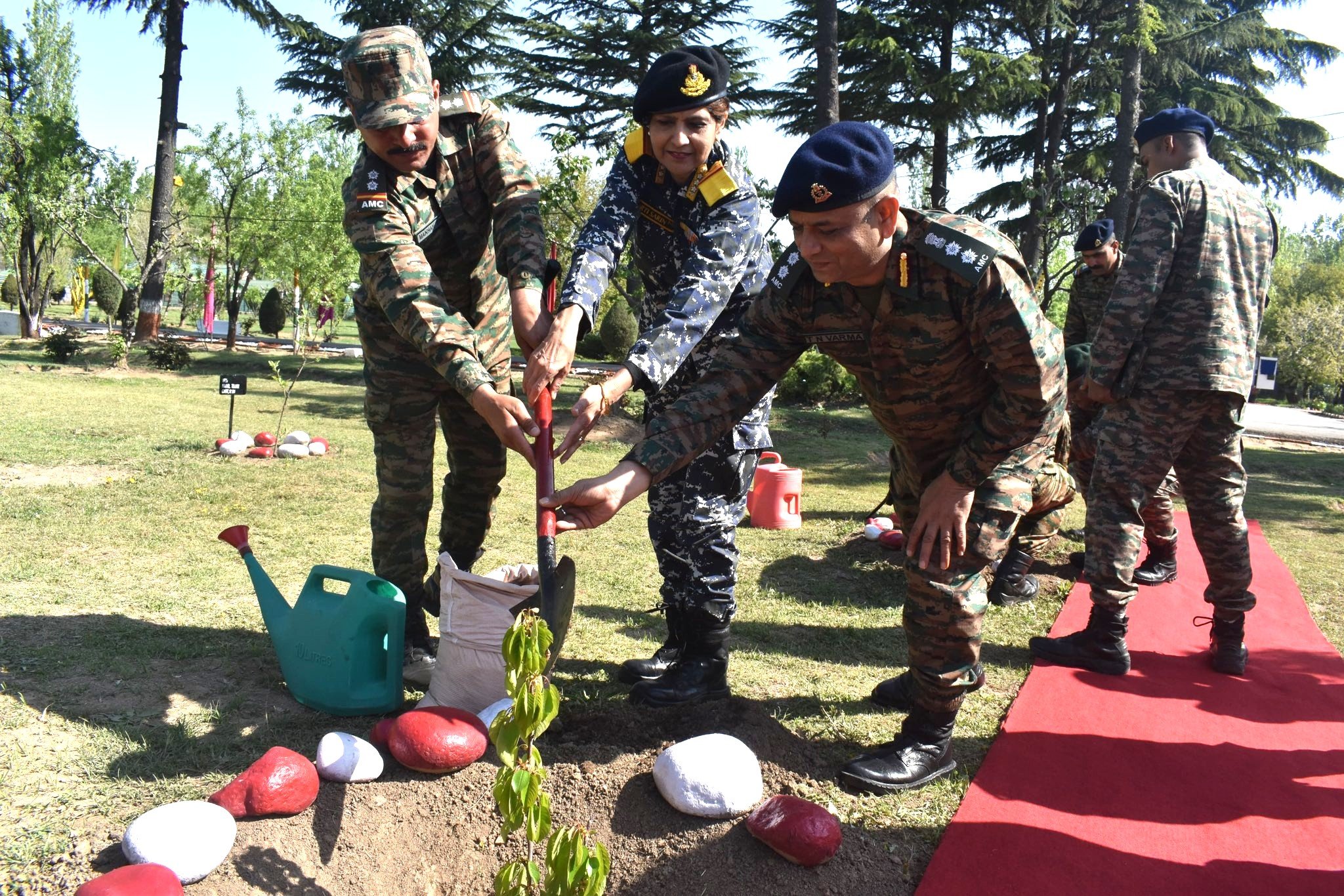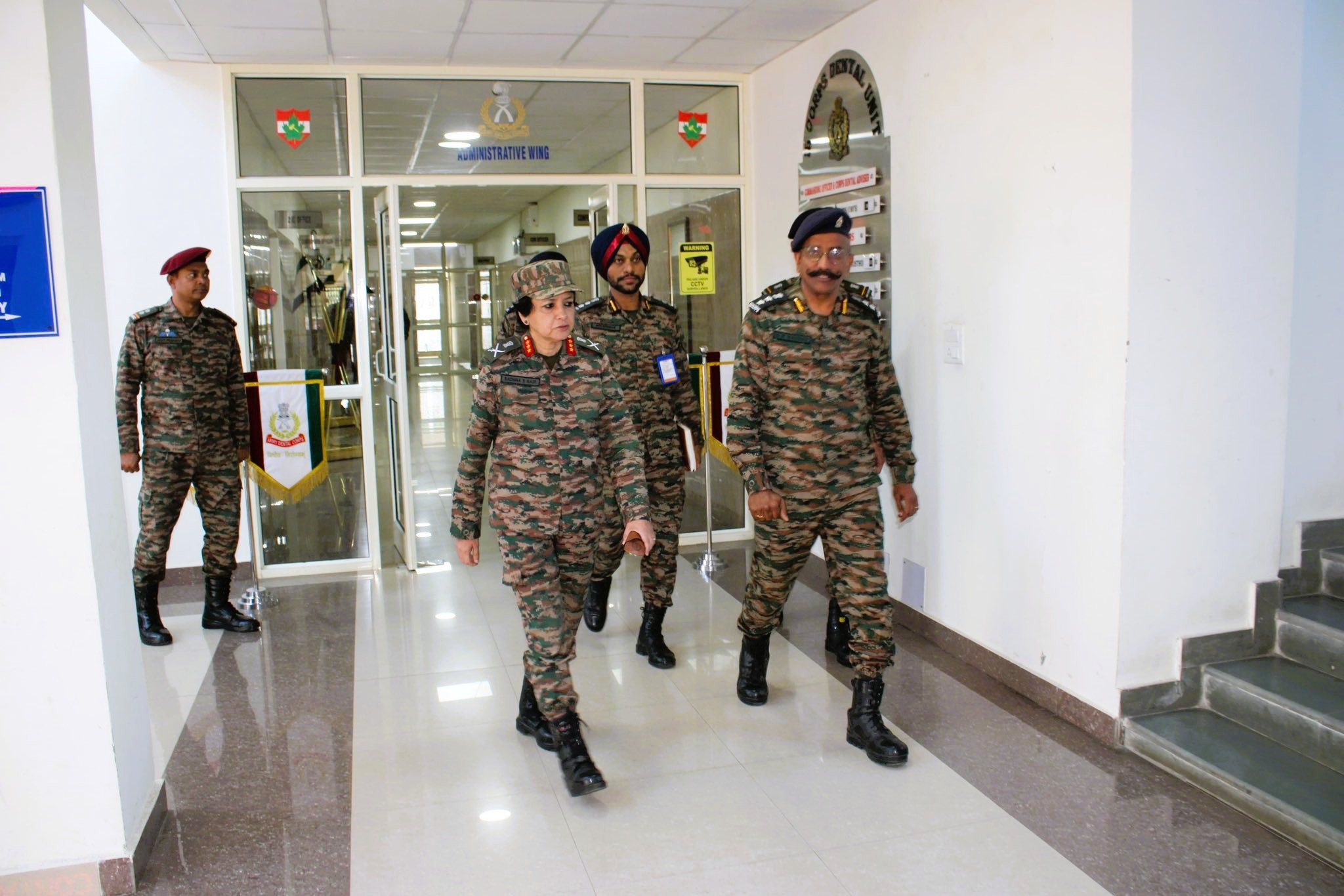Air Marshal B Manikantan Inaugurates Station Historical Cell at Thanjavur Air Force Station
Air Marshal B Manikantan, Air Officer Commanding-in-Chief of the Southern Air Command (SAC), visited Air Force Station Thanjavur, where he…
CM Chandrababu Naidu and Maj Gen Ajay Misra Discuss War Memorial and Defence Collaboration in Amravati
In a significant step towards strengthening ties between the Indian Army and the state of Andhra Pradesh, Major General Ajay…
Indian Army Honors Veterans with Achiever Awards in Nagpur for Outstanding Societal Contributions
In a heartfelt ceremony held in Nagpur, the Southern Command of the Indian Army celebrated the remarkable contributions of its…
478 Officers Graduated from Defence Services Staff College
The Defence Services Staff College (DSSC) in Wellington hosted the graduation ceremony for its 80th Staff Course, where Lieutenant General…
Vice Admiral Arti Sarin Visits Field Hospital in Srinagar, Emphasizes Operational Readiness and Sustainability
Surgeon Vice Admiral Arti Sarin, AVSM, VSM, the Director General Armed Forces Medical Services (DGAFMS), conducted a significant operational visit…
Lt Gen Sadhna S Nair Visits 15 Corps Dental Unit and Witnesses Tactical Combat Casualty Care Training
Lt Gen Sadhna S Nair, Director General Medical Services (Army) and Senior Colonel Commandant of the Army Medical Corps, made…

